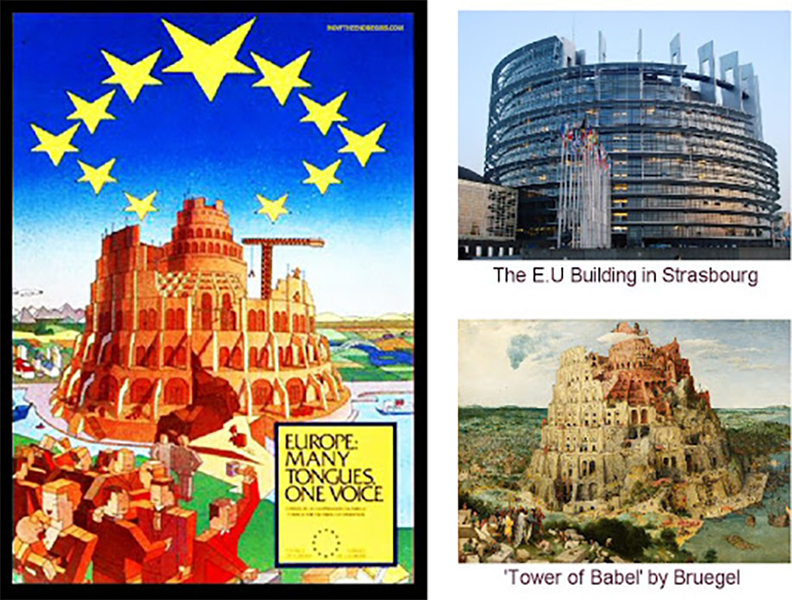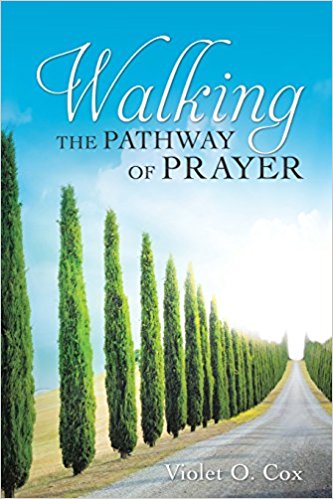The Guardian
Ed Pilkington in New York
September 19, 2022·8 min read
The document is so dowdy and formal it resembles the annual minutes of a society of tax accountants. Its index lists sections on “objectives” and “rules of engagement” and carries an “addendum” that provides recommendations for hotels and parking.
On the cover, two words give a clue to the notoriety of the group that produced it: “MAGA” and “WARNING”. That and the date: 5 January 2021, the day before the US Capitol attack.
Related: Proud Boys developed plans to take over government buildings in Washington DC
What goes unsaid on the cover and is barely mentioned throughout the 23 pages is that this is the work of one of the most violent political gangs in America, the far-right street fighters told by Donald Trump to “stand back and stand by”: the Proud Boys.
The document, published by the Guardian for the first time, gives a very rare insight into the meticulous planning that goes into events staged by the far-right club. The document was obtained from a Proud Boys member by the extremism reporter Andy Campbell as he researched his new book, We Are Proud Boys: How a Right-Wing Street Gang Ushered in a New Era of American Extremism. The book will be published on Tuesday. Campbell shared the document with the Guardian.
The Proud Boys have been designated a hate group by the Southern Poverty Law Center and are alleged to have acted as key organizers of the violent assault on the Capitol.
In the wake of January 6, which has been linked to the deaths of nine people, the New York march featured in the document was called off and the strategy so fastidiously laid out was never implemented. But the document remains sharply revealing.
It shows the lengths to which the Proud Boys go to prepare for potentially violent encounters and then to cover their tracks – something prosecutors have stressed but that has never been seen in the group’s own words. It exposes the militaristic structure and language the Proud Boys have adopted, and their aspiration to become the frontline vigilante force in a Trump-led America.
It also provides clues as to how the group continues to spread its tentacles throughout the US despite the fact that many of its top leaders, including its national chairman, Enrique Tarrio, are behind bars awaiting trial on charges of seditious conspiracy.
The purpose of the document is to provide a “strategic security plan” and call to action, summoning Proud Boys members to a pro-Trump Maga march that was scheduled for New York City on 10 January 2021. That was four days after Congress was to certify Joe Biden’s victory in the 2020 presidential election – the occasion that would be targeted by the fatal insurrection.
The author of the document is Randy Ireland, who as president of the group’s New York branch, the Hell’s Gate Bridge Chapter, is one of the most prominent Proud Boys in the US north-east. The paper was circulated through Telegram, the encrypted chat app widely used by the Proud Boys as an organizing tool, to at least nine other chapters in New York and beyond.
Campbell told the Guardian the decentralized structure of the group, into what it claims are 157 active chapters in all but three states, is one of the Proud Boys’ greatest strengths, as reflected in the autonomous nature of the New York planning.
“Chapter leaders like Randy can create their own events, run independently of each other,” Campbell said. “Enrique Tarrio and other leaders are in prison, but these guys are going to continue what they are doing.”
‘We will not disappoint’
The language in the planning paper is overtly militaristic. Ireland designates himself “General of Security Detail”, while his underlings in the chain of command are “VPs” of “Recruiting”, “Scout Security” and “Team Leads”.
The plan is for 60 or so Proud Boys at the 10 January event in Manhattan to be corralled into seven “tactical teams” of five to eight men each (they are all men, as one of the overriding values of the group is misogyny). Members are told to bring protective gear, including “knife/stab protection, helmets, gloves, boots etc” and to make use of radio channels, walkie-talkies or Telegram to communicate with each other.
They are to stick together in groups and under no circumstances allow “Normies” – ordinary Trump supporters who are not Proud Boys – or “Females” into their ranks.
“Their presence will jeopardise the health and safety of all those involved with Security, and simply cannot be allowed to happen!” Ireland writes.
Maps reproduced at the back of the document show positions “scouts” and “tactical teams” should adopt at key points along the route of the march, which was planned to start at Columbus Circle and pass Trump Tower.
“That spot is understood in a very public way to hold special meaning for us,” the paper says, referring to Trump’s home on Fifth Avenue. “WE WILL NOT DISAPPOINT!”
Campbell, who has been reporting on the Proud Boys since they started turning up at Trump rallies in early 2017, describes them as America’s most notorious political fight club. In the planning paper, he sees equal parts fantasy and danger.
“These guys see themselves as super soldiers, like some sort of military outfit,” he said. “On one level it’s funny, as nothing is in fact going to pan out the way they say it will. But on another level, it’s alarming because it shows how much thought they put into this stuff.”
In We Are Proud Boys, Campbell traces the group from its birth in 2015-16 through to its central role on January 6 when a member, Dominic Pezzola, became the first person to breach the US Capitol. At least 30 Proud Boys have been charged in relation to the insurrection, including Tarrio and four others accused of seditious conspiracy – among the most serious indictments yet handed down.
The group was invented by the British-born founder of Vice magazine, Gavin McInnes, who branded himself a “western chauvinist” and peddled in bigotry. McInnes floated the Proud Boys name on his online chatshow in May 2016, introducing them as a “gang” and inventing a uniform, a black Fred Perry polo shirt with yellow trim.
McInnes was careful to brand his creation as harmless fun, a satirical male-only patriotic drinking club that later attached itself to all things Trump. But Campbell argues that from the outset political violence was baked in.
A Proud Boy was an organizer of the 2017 Unite the Right rally in Charlottesville, Virginia, during which an anti-fascist protester was murdered. The group has held violent gatherings in Portland, Oregon. Outside a Republican event in New York in 2018, several members were arrested and charged with felonious assault.
‘Street-level violence’
Proud Boys membership is structured into four ranks, known as “degrees”, the fourth granted once you “get arrested or get in a serious violent fight for the cause”, as McInnes himself explained. In an interview with Campbell for the book, McInnes denied promoting violence and insisted the Proud Boys were never proactively aggressive, only reacting to leftwing attacks.
That official line is reiterated in the document published by the Guardian. Ireland is careful to portray the Proud Boys as a defensive group.
He writes: “If any violence does spout off, all Proud Boys are expected to respond immediately – only so far as to eliminate and end that threat to them or others. VERY IMPORTANT: Once the threat has been neutralized, WE STOP!”
But there is a glaring contradiction: Ireland presents his chapter as a non-violent organization yet it goes out seeking violence. He assigns the group, uninvited, the role of a vigilante police force.
“We are there as the first line of defense for all event attendees,” he writes, then contradicts himself by saying the only role of the Proud Boys is to play a “back-up role” to law enforcement and to “force them to do their jobs”.
That speaks volumes. It carries the implication that if the police will not assail anti-fascist protesters, Proud Boys will.
“I’ve reported at Proud Boys events where they stood back and relaxed as police lobbed teargas and other munitions into the crowd of counter-protesters,” Campbell said. “Then the Proud Boys didn’t have to do what Randy Ireland is hinting at here – step in and do the fighting themselves.”
For Campbell, the most disturbing aspect of the document is that, with its soft-lensed double-talk and contradictory meanings, it falls into arguably the main ambition of the Proud Boys: the normalization of political violence. Despite having so many leaders behind bars, the group is prospering.
As new chapters pop up, Americans are increasingly inured to the idea of heavily armed gangs in public settings. Proud Boys have posed as “security details” at anti-abortion rallies, anti-vaccination demonstrations, pro-gun protests and of course Trump rallies.
“The street-level violence the Proud Boys helped to create is now being carried out by regular people,” Campbell said. “You saw it on January 6, you see it at Planned Parenthood and LGBTQ+ events where people are harassed and attacked by everyday Americans.”
Proud Boys memo reveals meticulous planning for ‘street-level violence’ (yahoo.com)
Morning Mama
Genesis 10 – THE TOWER OF BABEL – PART 2
July 01, 2020
Cameron A. Bowen
(Part 1 is in the morning manna audio)
Genesis 10:1 - Now these [are] the generations of the sons of Noah, Shem, Ham, and Japheth: and unto them were sons born after the flood.
Genesis 10:2 - The sons of Japheth; Gomer, and Magog, and Madai, and Javan, and Tubal, and Meshech, and Tiras.
Genesis 10:3 - And the sons of Gomer; Ashkenaz, and Riphath, and Togarmah.
Genesis 10:4 - And the sons of Javan; Elishah, and Tarshish, Kittim, and Dodanim.
Genesis 10:5 - By these were the isles of the Gentiles divided in their lands; every one after his tongue, after their families, in their nations.
Genesis 10:6 - And the sons of Ham; Cush, and Mizraim, and Phut, and Canaan.
Genesis 10:7 - And the sons of Cush; Seba, and Havilah, and Sabtah, and Raamah, and Sabtechah: and the sons of Raamah; Sheba, and Dedan.
Genesis 10:8 - And Cush begat Nimrod: he began to be a mighty one in the earth.
Genesis 10:9 - He was a mighty hunter before the LORD: wherefore it is said, Even as Nimrod the mighty hunter before the LORD.
Genesis 10:10 - And the beginning of his kingdom was Babel, and Erech, and Accad, and Calneh, in the land of Shinar.
POLITICO
Europe’s tower of Babel
The inauguration of the Council of the European Union’s Lex building last week marks the latest stage in a drawn-out process of regrouping the institution’s staff in three buildings near the Schuman roundabout in the EU district of Brussels.
By Simon Taylor
Updated 4/12/14, 1:49 PM CET

The inauguration of the Council of the European Union’s Lex building last week marks the latest stage in a drawn-out process of regrouping the institution’s staff in three buildings near the Schuman roundabout in the EU district of Brussels.
The Lex property will house 1,200 Council staff including the 800 translators who are currently working in three buildings scattered across Brussels – Woluwe Heights near the Cora supermarket at the start of the E40 motorway, EspaceRolin at the intersection of Boulevard General Jacques and Chaussée de Wavre, and a site on Place Frère Orban. These three buildings will be vacated now that Lex is available.
Lex’s main purpose is to act as a linguistic nerve centre for the Council and its multitude of working groups of experts. The name was chosen following a survey of staff to reflect the site’s linguistic function. It has seven meeting rooms, two of which are fully equipped with spaces for 150 officials and 29 interpreting booths.
There are currently 23 official languages with the addition in January of Irish, Romanian and Bulgarian. But this number could rise to 29 if Croatia, Macedonia, Serbia, Bosnia and Herzegovina, Albania and Turkey join.
Council’s jurist-linguists who ensure that translations into the official languages are legally correct, will also move into Lex in 2008.
The five other meeting rooms are available for other functions at present but can be equipped for working group sessions if needed. According to Johan Burgers, head of unit for the Council’s buildings policy, ministers could meet in Lex if there were an emergency at the Justus Lipsius.
The building will also house the Council’s archives and libraries as well as a 400-seat canteen which can feed 800 people per session.
In addition to the Council’s translators and jurist-lingusts, Lex will house secretaries, managers, information technology staff, librarians, messengers and security guards.
The construction of the building was not simple. The project manager, Lex 2000 building company, had to deal with the collapse of part of rue de la Loi as well as the discovery of 17th century building remains. Nevertheless the project was completed within the three-year deadline at a total cost to the Council of €262 million. The building itself cost €200m, plus €35m for the land and €27m in fees and other costs. Putting up the Lex building posed major construction difficulties as the site is bounded by streets on two different levels, with a difference of 15 metres in height between the Chausséed’Etterbeek and the higher-up rue de la Loi.
The main pedestrian entrance to the building is on rue de la Loi, but since cars and trucks cannot stop on rue de la Loi, there is a pick-up/drop-off point and VIP entrance on the lower level of Chausséed’Etterbeek.
In line with current urban transport policy which aims to encourage office workers to use public transport rather than private vehicles, there are only 200 parking spaces for the 1,200 occupants.
The property will be the first in Belgium with a reinforced façade, designed after the 9/11 attacks in the US, which, in the event of a bomb attack is supposed to prevent the glass exploding inwards and injuring the occupants.
Part of the Council’s brief was for high ecological performance and the building includes heat pump technologies and cogeneration for combined heat and power. Rainwater is recovered and used in the sanitation system while the lighting is controlled by an energy-saving presence detection system.
The building also has a state of the art sound insulation system to deal with the challenges of the building’s location between a busy inner city road, rue de la Loi, and a train station.
Marc Vankeirsbilck from DexiaBanque, co-owner of Lex 2000, the company which managed the project, said that because the tower building was very compact and did not occupy the entire site, the architects have been able to include public space around on Lex on the Chasséed’Etterbeek level including a garden and a water feature. There are two Japanese-style gardens inside the building on the ninth floor to give staff with offices on the inside natural light and a pleasant view. Two panoramic elevators on the outside of the building offer views of the surrounding area. Part of that panorama will be continuing building work.
The next stage of the Council’s plans is to refurbish the newest part of the Résidence Palace building, which lies between the Justus Lipsius building and the Lex building. It will then become the Council’s main office in 2013. At that point the Council’s military and crisis management staff will vacate 158 Avenue de Cortenberg and the ERM building, designed by Henri Maquet, the architect responsible for the Palais de Justice and the Royal Glasshouses at Laeken.
The Council has been a bit of a travelling circus since the 1970s when it occupied the Charlemagne building, which now houses the European Commission’s external relations, trade and enlargement directorates-general. The secretariat then moved across rue de la Loi to the Justus Lipsius building in 1994, six years after work started.
But the rapid succession of EU enlargements meant that the Justus Lipsius had to be extended, not least because the meeting rooms for ministers’ sessions were only designed for 12 member states and were equipped with only ten translation booths for the then nine official languages. The main meeting room was expanded to accommodate 210 people and 25 languages.
This year the Council covered the entrance to create an atrium with 600 places for journalists covering summit meetings.
news24
Tower of Babel: symbol of unfinished business!
25 Apr 2013
In our day, impressive towering structures are going up everywhere. Just last year, the tallest building in the European Union was inaugurated. That building is The Shard in London standing no less than 309.6m or 1015.748 high!
Let’s go to where it all started! Gen 10: 8-9: ‘Cush begot Nimrod; he began to be a mighty one on the earth. He was a mighty hunter before the Lord.’ Then verses 10-11: ‘And the beginning of his kingdom was Babel, Erech, Accad and Calneh in the land of Shinar. From that land he went to Assyria and built Nineveh, Rehoboth Ir, Calah and Resen between Nineveh and Calah’
Nimrod certainly did not lack ambition. We see that his establishment would lay the foundation for what would be the first rebellion against God. At the time the whole earth had ‘one language and one speech.’ As they were expanding they found a plain in the land of Shinar. The land of Shinar is in the region of ancient Babylon in Mesopotamia, part of modern Iraq.
In Genesis 9:1 we read: ‘So God blessed Noah and his sons, and said to them: ‘Be fruitful and multiply and fill the earth.’ I would think that if anyone who starts a venture wants to expand. However, we see a new strategy put forward in Gen 11:4: ‘And they said: Come let us build ourselves a city, and a tower whose top is in the heavens; let us make a name for ourselves, lest we be scattered abroad the face of the whole earth.’
In other words, the leadership felt that there was somehow in the commandment – remember God is not the business of suggesting - to fill the earth did not resonate with them. Also, one could understand the need to build a tower but why did it have to be so high? Exactly what were they trying to achieve? Nimrod’s ultimate plan was to unite the world. Is there perhaps a modern day phrase that conveys this objective? How about the phrase: ‘New World Order’?
At this stage we will switch terminology and refer to the tower as a ziggurat. What is a ziggurat? The Free Online Dictionary defines it as: ‘a temple tower of the ancient Assyrians and Babylonians, having a form of a terraced pyramid of successively receding stories.’ In other broad base at the bottom but becoming increasingly smaller the higher you go. Let’s explore ziggurats further. ‘Ziggurat designs ranged from simple bases upon which a temple sat, to marvels of mathematics and construction which spanned several stories and were topped with a temple. The Mesopotamians believed that these pyramid temples connected heaven and earth. In fact, the ziggurat at Babylon was known as ‘Etemenankia’ which means ‘House of the platform between heaven and earth’
This reveals that the purpose of the ziggurat’s height was not a practical one, say to as a lookout post to spot approaching enemies. Was this an attempt to reach another dimension? The plan was thwarted when the languages were ‘confused’ and as the result the ziggurat was not completed. Nimrod and his imposter ‘grand architect’ failed with that attempt and he will fail again.
Scholars estimate the construction of Nimrod’s ziggurat to have been around 2350 BC. Did this rebellion end there or do we find in our day a rekindling of those initiatives of ancient times?. Pres George Bush (sr) made the following speech on 11 Sep 1990: ‘Out of these troubled times, our fifth objective – a new world order –can emerge: a new era – freer from the threat of terror, stronger in the pursuit of justice, and more secure in the quest for peace.’ Eleven years later to the day, 11 Sep 2001, his son also President George Bush (jr) was in charge of a nation who suffered an attack of unprecedented proportions and indeed the ‘troubled times’ his father spoke about were intensified exponentially.
In reality the goal of world unification has not died. There is a dogged persistence and determination to make this a reality. Is it then not interesting that theEuropean Union (Revived Roman Empire) Parliament Building at Brussels, Belgium was designed in the form of an unfinished Tower of Babel? Also a stylized Tower of Babel has been used to advertise the European Union’s goal of human unification under the slogan: ‘Many tongues, one voice.’ The EU Parliament was completed in Dec 1999.
It’s almost like someone is trying to settle a score.




















